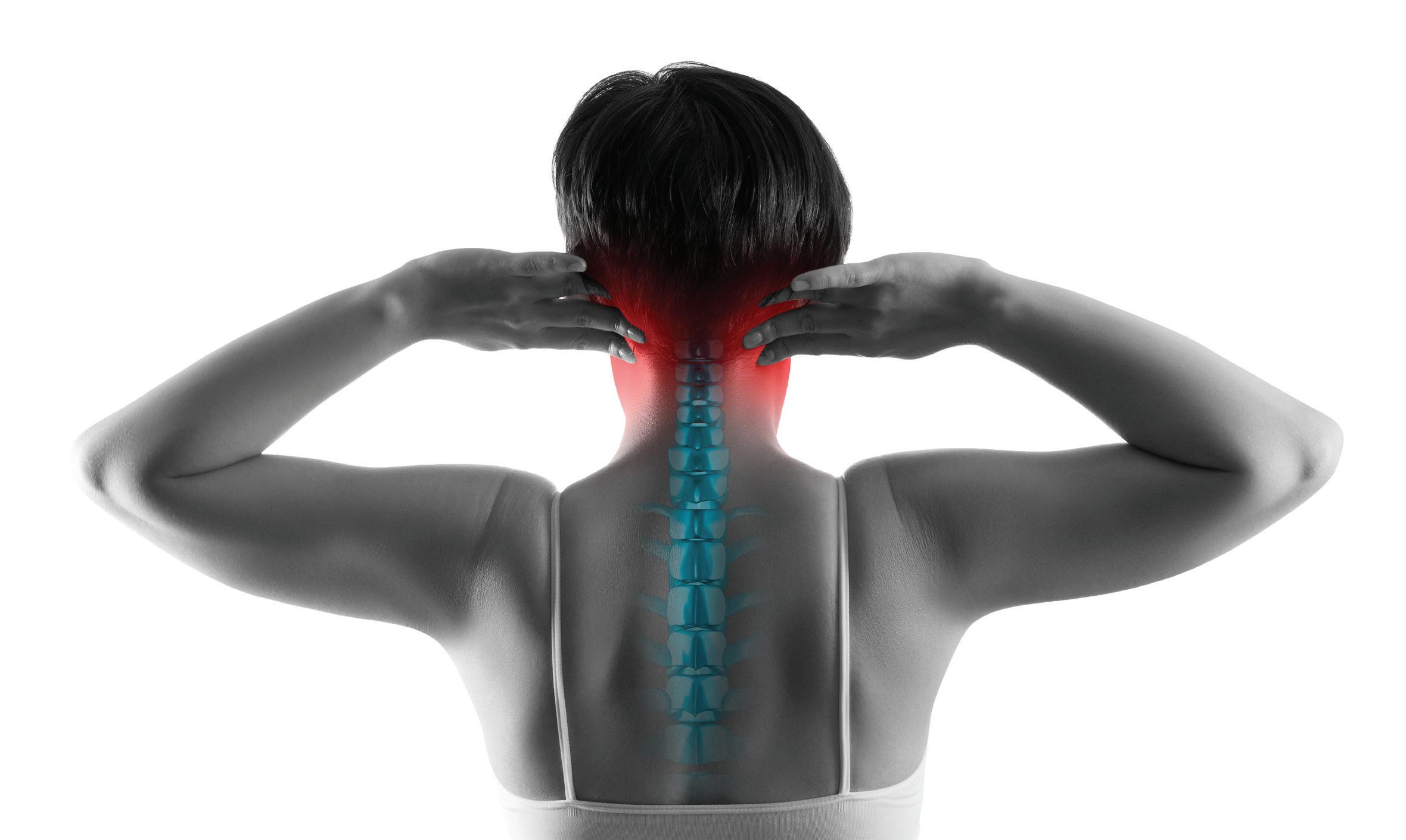
10 minute read
EXERCISE
WITH MOST SPORTS SPEED, AGILITY, ENDURANCE, BALANCE AND MORE GOES INTO BEING AN ELITE ATHLETE. TENNIS REQUIRES QUICK CHANGES IN DIRECTION WITH THE ABILITY TO CREATE POWER AND STABILITY. THESE FIVE EXERCISES CAN IMPROVE ATHLETICISM AS WELL AS PREVENT COMMON INJURIES THAT MAY OCCUR WITH CHANGE IN DIRECTION.
EACH EXERCISE SHOULD BE DONE FOR 30 SECONDS, TWO TO THREE TIMES. Lateral Two-Foot Hop Back and Forth Hop With both feet together, stand behind the line facing forward. Once the timer begins, jump forward over the line with both feet together, then backwards as quick as possible. Single-Foot Hops This exercise is done in the same fashion as the above variations with the exception of only using one foot at a time when hopping over the line. Begin with hopping side to side for one set, then switch to the other foot. Second variation, hop on one foot forward and backward as fast as you can, alternating which foot you are hopping on after the allotted time.
Advertisement
Keeping both feet together while standing on the side of a line, start by hopping over the line laterally as quick as you can, then jumping back. The goal is to get over the line quickly, not how high you can jump over the line. Skaters Start by standing on your left foot. When the timer starts jump off your left foot in a lateral motion to land on your right foot. Repeat with your right foot, jumping side to side in a skating motion until the timer stops.
This exercise is used to increase ankle stability and endurance and targets the glutes, leg power and most importantly hips. Skaters are also great for the side-to-side change in Stunna - Half Inspire.qxp_Layout 1 11/1/17 12:24 PM Page 1direction used in tennis. Curtsy Lunge This exercise helps to form core stability, improve leg strength and increase lateral power. Start with your legs side by side. Step your right foot backward and across behind your left foot while keeping your hips stable and facing forward. Gradually lower into a lunge by bending both legs into a 90-degree angle. Come back into the starting position and perform on the other leg. Continue for 10 alternating repetitions on each leg.
@stunnasfit _ somi
AD

COME AND SEE
what the hype is about
BOXING CARDIO | BOOT CAMP | PRIVATE TRAINING GROUP TRAINING | FIT KIDS | AMAZING TRAINERS 786.728.6737
Back Health

Strength, Strains and Sprains
By Dr. Aaron Dutruch
AS A CHIROPRACTOR, ONE OF THE MORE COMMON REASONS PATIENTS SEEK
TREATMENT IS BACK PAIN. THERE ARE SEVERAL TYPES OF INJURIES THAT COULD CAUSE A PATIENT PAIN OR DISCOMFORT. OF THESE, THE MOST COMMON INJURIES WE SEE ARE SPRAINS, STRAINS, JOINT DYSFUNCTION AND MORE SERIOUS ISSUES INVOLVING THE SPINAL DISCS AND NERVES.
Strains & Sprains
Sprains are defined as damage to the muscle or tendons, whereas strains are defined as damage to the ligaments. They usually occur at the same time and are often treated simultaneously. These types of injuries can occur throughout the spine and are typically characterized by local pain (pain in one spot that does not move), potential swelling and pain with movement. Sprains and strains can happen with motor vehicle accidents, falls and with improper lifting.
Joint Dysfunction
The spinal joints are unique in that they are not specifically designed to bear weight like the knee, hip or ankle joints. They are designed to be like “guide rails” to help direct motion and protect the spinal cord. Joint dysfunction simply means that the joints are not moving the way they should. These injuries are subtle and often lead to muscle spasms, chronic stiffness or discomfort for the patient. The most common causes of joint dysfunction are incorrect posture and sprains or strains that have not
healed properly; which can cause a change in bio-mechanics (how we move).
Disc and Nerve Involvement
The spinal discs are the primary weight bearing structures within the spinal joint complex. Because these structures are so close to the spinal nerves, they often cause intense pain and radiculopathy (pain, numbness, tingling or weakness often into the extremities). These injuries can occur several ways, such as during a motor vehicle accident, when lifting improperly, or over time with joint degeneration.
Prevention and Treatment
Although its difficult to avoid traumatic events such as accidents and falls, lets focus on things we can affect.
Increasing core strength and flexibility are great ways to help reduce the risk of injury. Yoga is an excellent, low impact way to increase your core strength and endurance; help reduce muscle tension and joint stiffness within the spine. Another easy way to increase your core strength and endurance is to keep your core muscles tight while you are standing. This will also increase your overall postural awareness and can help reduce the effects of degeneration as we age.
Overall, treatment for these various conditions will be different from person to person and depend on the severity of the injury. These treatments could include adjustments, exercises and various therapeutic modalities.

PROPER POSTURE is an important aspect of injury prevention so remember these posture tips throughout the day to help. While seated, keep your feet on the floor without crossing your legs, keep your feet in front of your knees (they should be level with your hips), keep your shoulders relaxed and remember to take frequent breaks (every 25 minutes or so). While standing, keep your weight on the balls of your feet with your knees slightly bent, your feet should be shoulder width apart, tuck your stomach in and keep your ears over your shoulders.

The chiropractic adjustment is an excellent way to help correct biomechanical deficiencies. Throughout our education as chiropractors we are taught how to test for abnormal motion within a patient’s spine, and learn adjusting techniques to correct these abnormal movements.
Specific exercises may be given to the patient to help stretch tightened muscles or to strengthen weakened muscles that are contributing to the patient’s pain. Other modalities available to the chiropractor could include, but are not limited to, nutritional counseling, decompression for disc related injuries, dry needling, soft tissue mobilization and electrical stimulation can be used to help reduce pain and muscle spasms.
But the most important tool in the chiropractic toolbox is education. The goal in any chiropractic office should be to make sure to teach you not only what is going on with your body and how we can help, but how you can avoid these injuries moving forward.
Dr. Aaron Dutruch received his BS in Kinesiology, Fitness and Human Performance from LSU and his Doctorate of Chiropractic from Texas Chiropractic College. He specializes in Functional and Kinetic Treatment with Rehabilitation (FAKTR). Premier Chiropractic, 1120 N Causeway Blvd. Ste 2, Mandeville, (985) 674-5855, premierchiromandeville.com
Allergies and Asthma: the Risk of Self Medicating

It's the peak of allergy season and symptoms may arise even if you have never suffered from allergies before.
There might be changes in your environment that you haven't considered. Many things can affect allergies, such as moving to a new home surrounded by new trees, or maybe your neighbor planted new flowers or plants that are affecting you differently and causing you to flare up.
Whether you are an allergy patient or never diagnosed before, if you are showing allergy symptoms it is important NOT to self-medicate or take any over-the-counter medication without previously discussing it with an allergist.
Self-medicating can pose you at risk of having an unexpected reaction to an ingredient you were not aware of or other serious secondary side effects and can cause more harm than good.
For asthma patients consistency in treatments is highly recommended and interruption of care may pose similar risks: if you suffer from asthma and don't keep it under control, you may be at higher risk of developing complications from COVID-19 and other respiratory viruses.
Either way, always consult the allergist first.
• Board certified physicians with extensive experience treating children & adults • Leading allergy & asthma practice in South Florida, established in 1974 • 19 offices conveniently located in Miami Dade, Broaward and
Palm Beach counties


APPLES APPLES

By: Crissie Mergogey
RED, GREEN, OR GOLDEN? NO MATTER YOUR APPLE PREFERENCE, THIS COMMON FRUIT DESERVES MORE PRAISE THAN IT GETS.

This crisp, juicy fruit can help improve immunity, regulate digestion, lower high cholesterol, reduce high blood pressure and help prevent cancer (among other diseases).
It should be obvious why the apple is one of the most popular fruits in the world!
In 2018, the USDA estimated that 11.4 billion pounds of apples were grown in the United States alone.
Apples can be eaten fresh as a snack, chopped into salads, cooked into oatmeal or used in sweet desserts.
No matter how you decide to enjoy this beneficial super-fruit, make sure to keep the skin intact to reap the most rewards. FIBER IS THE HERO HERE.
Apples are a great source of soluble and insoluble fiber. The skin contains most of the insoluble fiber, while the flesh holds the soluble fiber. BOTH TYPES OF FIBER PROVIDE SIGNIFICANT HEALTH BENEFITS.
During digestion, soluble fiber becomes gel-like and binds to cholesterol.
Instead of entering the blood stream, cholesterol exits the body via a bowel movement.
This special fiber also slows digestion, which keeps you feeling full longer and can support weight loss.
Insoluble fiber does not change during digestion, which allows it to physically push food, excess hormones and toxins out of the body.
Inadequate amounts of insoluble fiber in the diet leads to constipation, bloating, and irregularity. FIBER IS NOT THE ONLY CHAMPION WHEN IT COMES TO APPLES, IT’S LOADED WITH ANTIOXIDANTS TOO.
One antioxidant that is particularly high in apples, called quercetin, has been associated with decreased risk of lung cancer, according to a study by Finland’s National Public Health Institute involving 10,000 people.
Antioxidants found in apples also help protect blood vessels and other organs from oxidative damage, which reduces the risk of cardiovascular disease and other health issues.
Minimizing oxidative damage to the pancreas can help to lower the chance of developing type 2 diabetes, according to a long-term Women’s Health Study.
This study found that women who ate apples had a 28 percent lower risk of type 2 diabetes than those who did not eat apples.
Not only can an apple’s antioxidants help reduce the chance of life-threatening diseases, but also the risk of catching a common cold or flu. THE DISEASE-FIGHTING COMPOUNDS IN APPLES REDUCE INFLAMMATION AND STRENGTHEN THE IMMUNE SYSTEM.
Mother Nature knew what she was doing when she made apple season arrive right before cold and flu season!
Apples originated from the mountains of Central Asia and there are now 7,500 varieties in the world, ranging in color from green to red and some can grow to the size of a grapefruit!
Most apples in the United States are grown in the state of Washington, with the Gala variety winning the popularity contest. ALL APPLES ARE A GOOD SOURCE OF POTASSIUM, MANGANESE, COPPER, VITAMINS A, C, K AND SEVERAL B-VITAMINS.
These nutrients play crucial roles in metabolism, immunity and bone strength.
Apples are widely available, affordable and loaded with diseasefighting nutrition.
So, enjoy an apple (or two) a day, and keep the doctor away!






